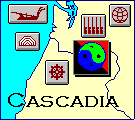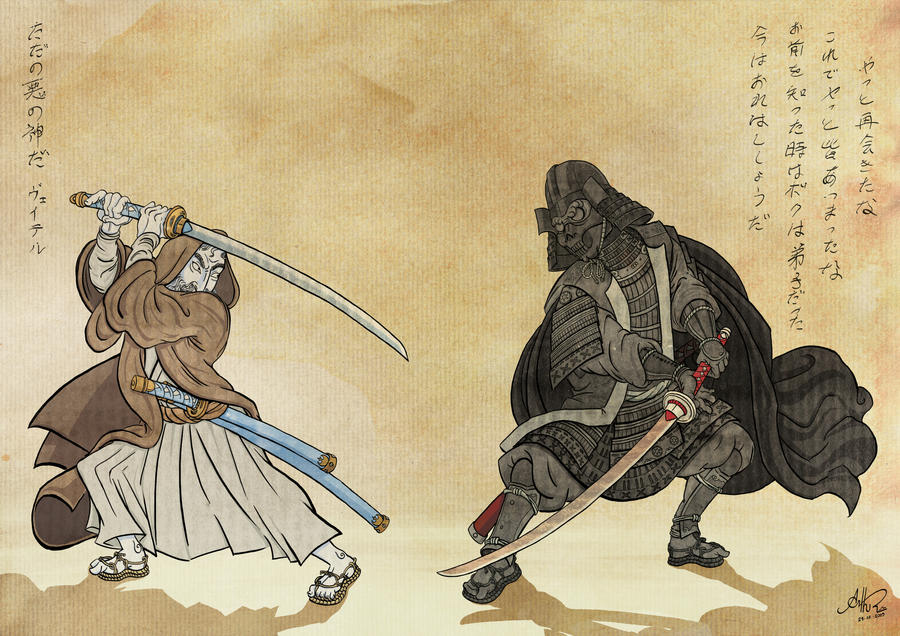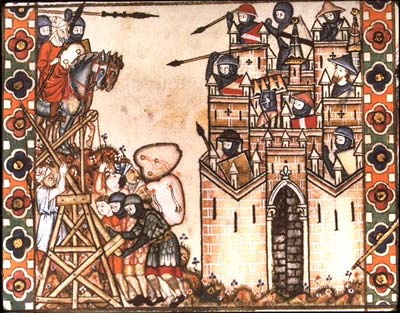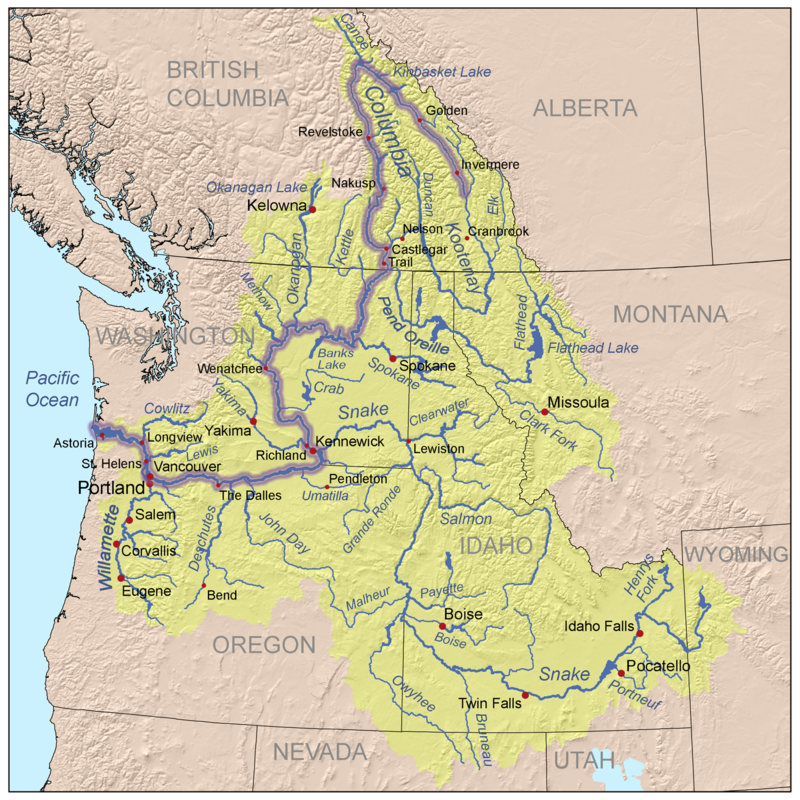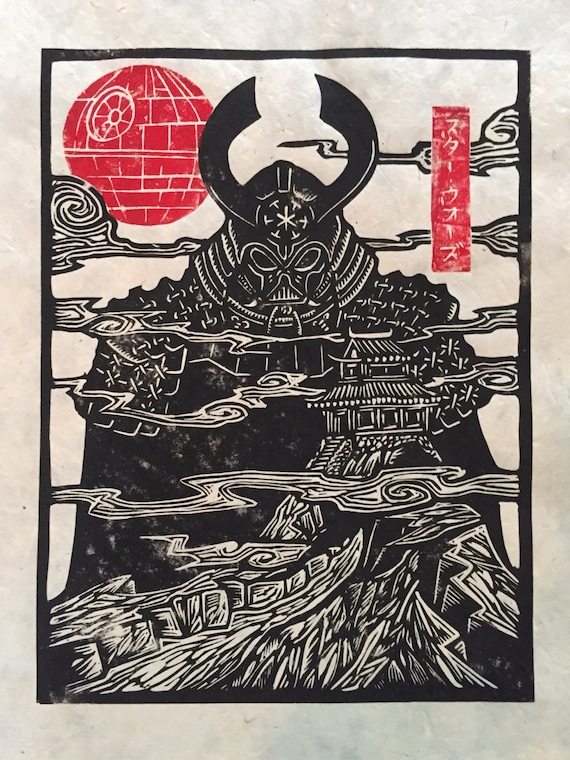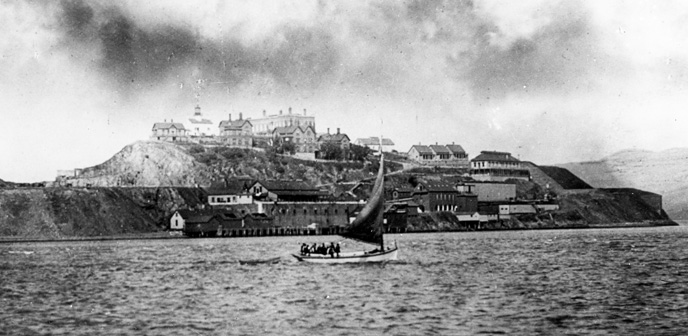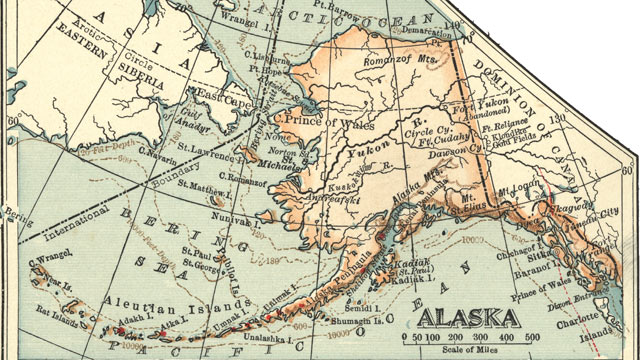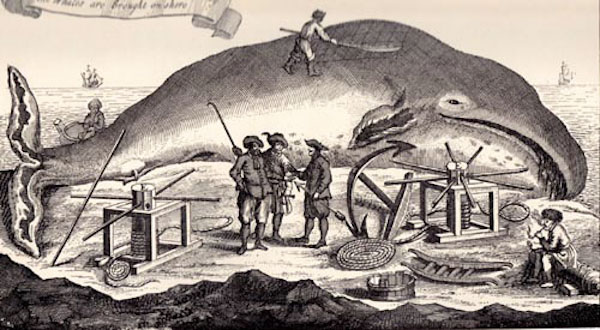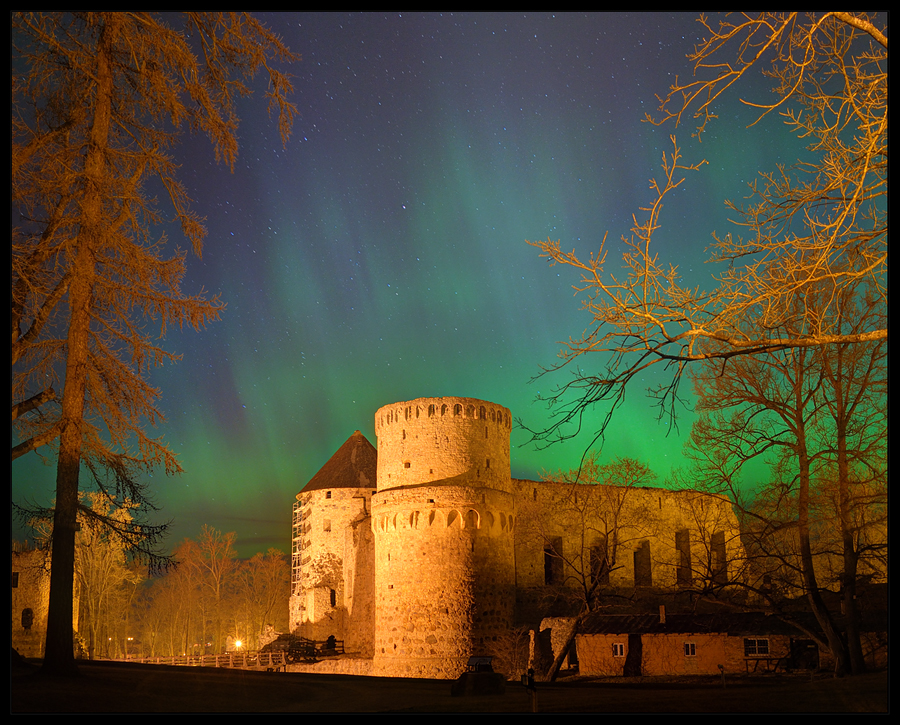Medieval America Mark III

What is it?
Medieval America begins with an observation, and then a question: "America never experienced a 'Middle Ages.' What would and American Middle ages look like?"
Medieval America is a collaborative project which seeks to explore a world in which the United States and the world at large has regressed to Medieval levels of technology. The genesis of this project came with "The Atlas of Medieval America", a project by the amazing writer Matthew White to explore this concept himself. The project itself was rather silly and tongue-in-cheek at times, with such fun features as Scientologist Pharaohs rulings over California, an eco-maniac Pacific Northwest, and a Voodoo Louisiana - and yet, it still managed to maintain a sense of realism. Despite the tremendous amount of effort put into it, White never completed this project.
This led to this discussion on the project in 2007. In 2009, this blog emerged to try and expound upon the world (and it has done an absolutely marvelous job of just that). This was followed by the Medieval America Co-op Project. While wonderful and well worth a read, it was subject to thread drama and disorganization, prompting a reboot into the likewise wonderful Medieval America Tk II, moderated and expanded by the user jmberry, who set out a standard of rigor that ensured high quality and consistency. Unfortunately, this thread petered out after a string of disorganized and improbable entries. Thus, due to popular demand, this third (and, hopefully, final) iteration has been launched.
Guidelines
What caused the Regression?
This won't be answered. Period. Matt White doesn't go into it, Jord839 refused to let it be discussed, and that will continue for this thread. Suffice to say, it didn't involve a nuclear war or an alien invasion or some such. Rather, it was a largely gradual but somewhat chaotic regression. There are few artifacts in common circulation from the Old World. The nature of the Regression raises a lot of questions. One of the most common ones is "What happened to the steel in skyscrapers? Are old cities the new mines?' The answer is for the most part no. If we were to be realistic, there should be plenty of surviving industrial tech and society should be based on harvesting the resources of the Old World. But that's not really the point. Generally speaking, just don't think about the Regression too hard.
When was the Regression?
Matt White said the Regression occurred 'over 900 years' ago. For the record, I tend to presume the Regression occurred in 2012, and the setting itself is sometime before the dawn of the 31st century.
What is the tech level?
Based on the '900 years' comment, I've assumed the tech is roughly equivalent to the 1300s OTL - this is the High Middle Ages, just before the Renaissance proper.
What is canon?
This project has gone through so many iterations and so many ideas have been thrown out there that it can at times be confusing to figure out what's canon and what's not. Here's the simple rule: The Atlas of Medieval America is canonical in its entirety, unless someone has good grounds to challenge one of White's suppositions. Neither the blog nor the Co-op project are canonical unless a specific entry is submitted and deemed acceptable. They should be looked to only as inspiration. Only specified entries from Tk. II are canonical, as listed below.
Beyond that if you wish to submit a post, all you have to do is write it up, put a good deal of effort into it, and post it here. It will be read and discussed by the participants, who will point out strengths and weaknesses and ensure that it is consistent with pre-established lore and the tone we're trying to cultivate. Taking all of this into consideration, I'll decide whether or not to put it into the Table of Contents, thus canonizing it. It's fairly rare that a post doesn't get canonized, and if it doesn't you can always re-write it.
Required & Recommended Reading
The only truly required reading is the original site. Beyond that, before posting we would ask that you have a decent familiarity with both the current iteration and Medieval America Tk II. We also would like to very strongly recommend the Feudal America blog, which while not canon is a great source of inspiration and has a lot of great ideas for the setting. If you have the time, I would advise that you read through the original Medieval America Co-op Project - though not even a little canon and deeply flawed, it also has a lot of great content and, again, can serve as a useful source of inspiration.
Beyond these directly related projects, I would also recommend reading Walter M. Miller's A Canticle for Leibowitz. While Miller envisions a radically different Medieval America to White, it captures a lot of the same vibe.
Table of Contents
General Information
The Plains
The Desert
The Pacific Northwest
The Feudal Core
Dixie
New England, Quebec & Beyond...

What is it?
Medieval America begins with an observation, and then a question: "America never experienced a 'Middle Ages.' What would and American Middle ages look like?"
Medieval America is a collaborative project which seeks to explore a world in which the United States and the world at large has regressed to Medieval levels of technology. The genesis of this project came with "The Atlas of Medieval America", a project by the amazing writer Matthew White to explore this concept himself. The project itself was rather silly and tongue-in-cheek at times, with such fun features as Scientologist Pharaohs rulings over California, an eco-maniac Pacific Northwest, and a Voodoo Louisiana - and yet, it still managed to maintain a sense of realism. Despite the tremendous amount of effort put into it, White never completed this project.
This led to this discussion on the project in 2007. In 2009, this blog emerged to try and expound upon the world (and it has done an absolutely marvelous job of just that). This was followed by the Medieval America Co-op Project. While wonderful and well worth a read, it was subject to thread drama and disorganization, prompting a reboot into the likewise wonderful Medieval America Tk II, moderated and expanded by the user jmberry, who set out a standard of rigor that ensured high quality and consistency. Unfortunately, this thread petered out after a string of disorganized and improbable entries. Thus, due to popular demand, this third (and, hopefully, final) iteration has been launched.
Guidelines
What caused the Regression?
This won't be answered. Period. Matt White doesn't go into it, Jord839 refused to let it be discussed, and that will continue for this thread. Suffice to say, it didn't involve a nuclear war or an alien invasion or some such. Rather, it was a largely gradual but somewhat chaotic regression. There are few artifacts in common circulation from the Old World. The nature of the Regression raises a lot of questions. One of the most common ones is "What happened to the steel in skyscrapers? Are old cities the new mines?' The answer is for the most part no. If we were to be realistic, there should be plenty of surviving industrial tech and society should be based on harvesting the resources of the Old World. But that's not really the point. Generally speaking, just don't think about the Regression too hard.
When was the Regression?
Matt White said the Regression occurred 'over 900 years' ago. For the record, I tend to presume the Regression occurred in 2012, and the setting itself is sometime before the dawn of the 31st century.
What is the tech level?
Based on the '900 years' comment, I've assumed the tech is roughly equivalent to the 1300s OTL - this is the High Middle Ages, just before the Renaissance proper.
What is canon?
This project has gone through so many iterations and so many ideas have been thrown out there that it can at times be confusing to figure out what's canon and what's not. Here's the simple rule: The Atlas of Medieval America is canonical in its entirety, unless someone has good grounds to challenge one of White's suppositions. Neither the blog nor the Co-op project are canonical unless a specific entry is submitted and deemed acceptable. They should be looked to only as inspiration. Only specified entries from Tk. II are canonical, as listed below.
Beyond that if you wish to submit a post, all you have to do is write it up, put a good deal of effort into it, and post it here. It will be read and discussed by the participants, who will point out strengths and weaknesses and ensure that it is consistent with pre-established lore and the tone we're trying to cultivate. Taking all of this into consideration, I'll decide whether or not to put it into the Table of Contents, thus canonizing it. It's fairly rare that a post doesn't get canonized, and if it doesn't you can always re-write it.
Required & Recommended Reading
The only truly required reading is the original site. Beyond that, before posting we would ask that you have a decent familiarity with both the current iteration and Medieval America Tk II. We also would like to very strongly recommend the Feudal America blog, which while not canon is a great source of inspiration and has a lot of great ideas for the setting. If you have the time, I would advise that you read through the original Medieval America Co-op Project - though not even a little canon and deeply flawed, it also has a lot of great content and, again, can serve as a useful source of inspiration.
Beyond these directly related projects, I would also recommend reading Walter M. Miller's A Canticle for Leibowitz. While Miller envisions a radically different Medieval America to White, it captures a lot of the same vibe.
Table of Contents
General Information
Atlas of Medieval America
Medieval North America Map
East Map
West Map
Western History Map
Cities and Nations Map
Population Map
Government Map
Trade Map
War Zones Map
Population and Race
Climate and Culture
Littoral Zones
Alphabets of North America
Language Map
Titles
Artifacts
Ghosts and other Monsters of Folklore
Medieval North America Map
East Map
West Map
Western History Map
Cities and Nations Map
Population Map
Government Map
Trade Map
War Zones Map
Population and Race
Climate and Culture
Littoral Zones
Alphabets of North America
Language Map
Titles
Artifacts
Ghosts and other Monsters of Folklore
Nomadic Herdsmen
New Israelite
Cowboys and Trade
The Anderson Territory
An Image of the Anderson Territory
The Rizzini Territory
The Black Hills Stampede
Some Notable Cowboys
The Cowboy Messiah
The Hell's Angels
The Account of Chief Hawken
Here There Be Monsters: The Jackalope
Here There Be Monsters: The Cursed Depths
New Israelite
Cowboys and Trade
The Anderson Territory
An Image of the Anderson Territory
The Rizzini Territory
The Black Hills Stampede
Some Notable Cowboys
The Cowboy Messiah
The Hell's Angels
The Account of Chief Hawken
Here There Be Monsters: The Jackalope
Here There Be Monsters: The Cursed Depths
Irrigation
Hydraulic Empires
Lost Vegas I II III IV
The History of Kuluradu
Colorodo
The Burned Men
Terra Incognita
Hydraulic Empires
The Californias
The California Republic: View from the Top
Foreign and Military Relations of the Republic of California I II III IV V VI
The Free Zone's Government
The Church of Scientology
Tales from the Galactic Gate
The Clarises
Languages in California
Map of the Southwest and Noroeste
Bajo Colorado & Baja California
Far Southern and Baja California
Hawai’i in Medieval America
The California Republic: View from the Top
Foreign and Military Relations of the Republic of California I II III IV V VI
The Free Zone's Government
The Church of Scientology
Tales from the Galactic Gate
The Clarises
Languages in California
Map of the Southwest and Noroeste
Bajo Colorado & Baja California
Far Southern and Baja California
Hawai’i in Medieval America
Confederacy of New Mexico
Confederacy of New Mexico: Internal Relations I
New Age
The New Age: An Era of Progress and Faith
A Brief History of the Age of Aquarius
Preface of an anonymous compendium of hemp-scrolls, thought to be written by Deejay Agustin of Gila
New Mexico Timeline
Here There Be Monsters: The Grey
Here There Be Monsters: Skinwalkers
Confederacy of New Mexico: Internal Relations I
New Age
The New Age: An Era of Progress and Faith
A Brief History of the Age of Aquarius
Preface of an anonymous compendium of hemp-scrolls, thought to be written by Deejay Agustin of Gila
New Mexico Timeline
Here There Be Monsters: The Grey
Here There Be Monsters: Skinwalkers
The History of Kuluradu
Colorodo
The Burned Men
Terra Incognita
History of the Pacific Northwest
Northwesterners
Transoceanic Contact: East Asia and the Pacific Northwest
Northwesterners
Map of Cascadia
An Image of the SALISH SEA
The Pacific Ideal: Government in the Northwest
Cities and States and City-States: Cascadia
City States of the Pacific Northwest: The Puget Sound Cities; Seattle, Tacoma and Olympia
City States of the Pacific Northwest: Seattle
City States of the Pacific Northwest: Vancouver
City States of the Pacific Northwest: Portland
City States of the Pacific Northwest: The Willamette Valley; Salem and Eugene
City States of the Pacific Northwest: Victoria
Forcasey
Victoria Island and the Fractured Coast
Eco-Buddhism
The Cascadian Lama
The High Cascades, Ascendant and Pure
The Twelve Zodiacs of Cascadia
The Order of Starbuck
The Order of Cobain
Here There Be Monsters: The Sasquatch
An Image of the SALISH SEA
The Pacific Ideal: Government in the Northwest
Cities and States and City-States: Cascadia
City States of the Pacific Northwest: The Puget Sound Cities; Seattle, Tacoma and Olympia
City States of the Pacific Northwest: Seattle
City States of the Pacific Northwest: Vancouver
City States of the Pacific Northwest: Portland
City States of the Pacific Northwest: The Willamette Valley; Salem and Eugene
City States of the Pacific Northwest: Victoria
Forcasey
Victoria Island and the Fractured Coast
Eco-Buddhism
The Cascadian Lama
The High Cascades, Ascendant and Pure
The Twelve Zodiacs of Cascadia
The Order of Starbuck
The Order of Cobain
Here There Be Monsters: The Sasquatch
Political Overview
The Great Midwestern War: Night of Burning Ships
The Mushmush
Here There Be Monsters: The Dogman
The Great Midwestern War: Night of Burning Ships
The Mackinaw League
The Freer the Trade, the Freer the Folk: Structure of the Mackinaw League
Commonwealth of Michigan
Genesee County
State of New York
The Northern Border: State of Ontario, Petersborough County, Hastings County, and Frontenac County
Chicagoland
The Benevolent and Protective Order of the Elks
The Humble Canoe
Dar-as-Salam: Muslim Merchants of the Great Lakes
The Wreck of the Edmund Fitzgerald: A Great Lakes Sailor's Ballad
The Freer the Trade, the Freer the Folk: Structure of the Mackinaw League
Commonwealth of Michigan
Genesee County
State of New York
The Northern Border: State of Ontario, Petersborough County, Hastings County, and Frontenac County
Chicagoland
The Benevolent and Protective Order of the Elks
The Humble Canoe
Dar-as-Salam: Muslim Merchants of the Great Lakes
The Wreck of the Edmund Fitzgerald: A Great Lakes Sailor's Ballad
Here There Be Monsters: The Dogman
Race in the South
That Most Peculiar Institution: Southern Society and Economics
The First Heresy: American Evangelism
That Most Peculiar Institution: Southern Society and Economics
The First Heresy: American Evangelism
Secretarial States
Gulf-Carribean Trade
State of Louisiana (N'awleens)
Commonwealth of Georgia
The Heresy of Stone
Commonwealth of Mississippi
State of Florida
State of Missouri
Red River Territory
Arkansas Territory
Arkansas & Red River Map
The Noble Brothers of the Ark
State of Tennisy (Tennessee)
State of Alabama
Free County of Montgomery
The Gullah-Geechee Cultural Heritage Corridor
The State of South Carolina
The Georgian Lord's Prayer
Here There Be Monsters: The Skunk-Ape
Gulf-Carribean Trade
State of Louisiana (N'awleens)
Commonwealth of Georgia
The Heresy of Stone
Commonwealth of Mississippi
State of Florida
State of Missouri
Red River Territory
Arkansas Territory
Arkansas & Red River Map
The Noble Brothers of the Ark
State of Tennisy (Tennessee)
State of Alabama
Free County of Montgomery
The Gullah-Geechee Cultural Heritage Corridor
The State of South Carolina
The Georgian Lord's Prayer
Here There Be Monsters: The Skunk-Ape
The United States of America
Government of the USA: The First Session
Government of the USA: The Senate
The Government of the USA: The Electoral College and House of Representatives
The CIA
The American Non-Denominational Church
Federal Privilege
The Great Church of the East: The Triple Crown
The History of the FBI
State of North Carolina
State of Virginia
The State of Pennsylvania
The Amish
Medieval Richmond
Government of the USA: The First Session
Government of the USA: The Senate
The Government of the USA: The Electoral College and House of Representatives
The CIA
The American Non-Denominational Church
Federal Privilege
The Great Church of the East: The Triple Crown
The History of the FBI
State of North Carolina
State of Virginia
The State of Pennsylvania
The Amish
Medieval Richmond
New England, Quebec & Beyond...
Last edited:
